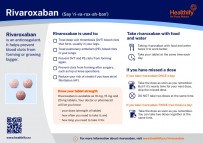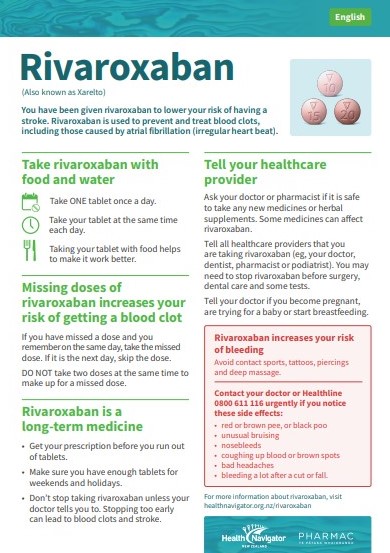Rivaroxaban belongs to a group of medicines called anticoagulants. Anticoagulants work by interrupting the clot-forming process and increasing the time it takes for blood clots to form. This helps prevent blood clots from forming and stops existing clots from growing bigger. Read more about anticoagulants.
When is rivaroxaban used?
- For people with atrial fibrillation, because atrial fibrillation increases the risk of stroke. A stroke happens when a blood clot forms in your heart and travels to your brain (usually due to an irregular heart rhythm known as atrial fibrillation atrial fibrillation).
- After hip or knee surgery when your risk of blood clots is increased.
- To treat and prevent recurrent deep vein thrombosis (DVT) or pulmonary embolism. Read more about DVT and pulmonary embolism.
The following video from the Bay of Plenty DHB is about the use of rivaroxaban in atrial fibrillation.
Video: Rivaroxaban for use in AF
(Bay of Plenty DHB, NZ)









